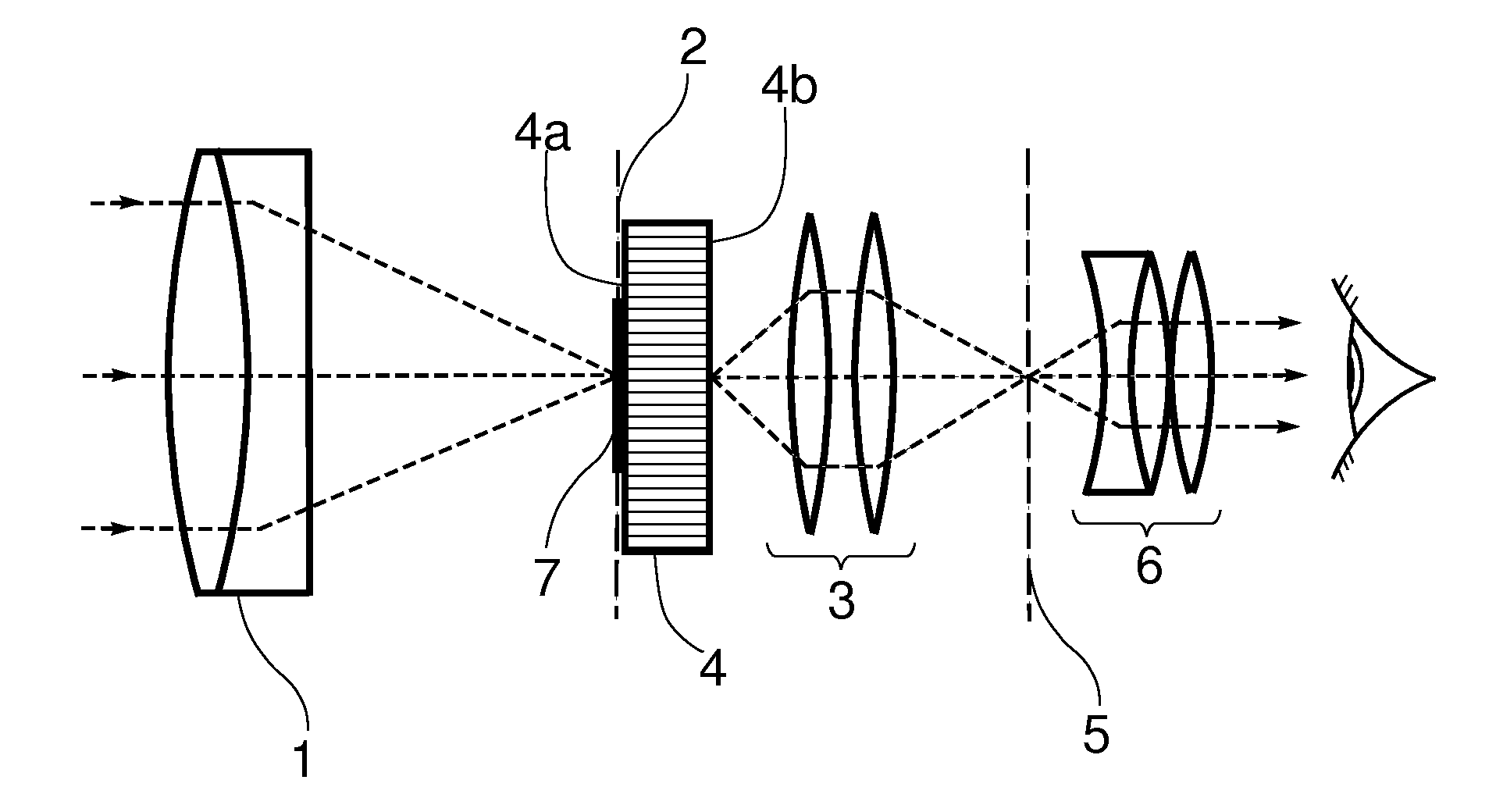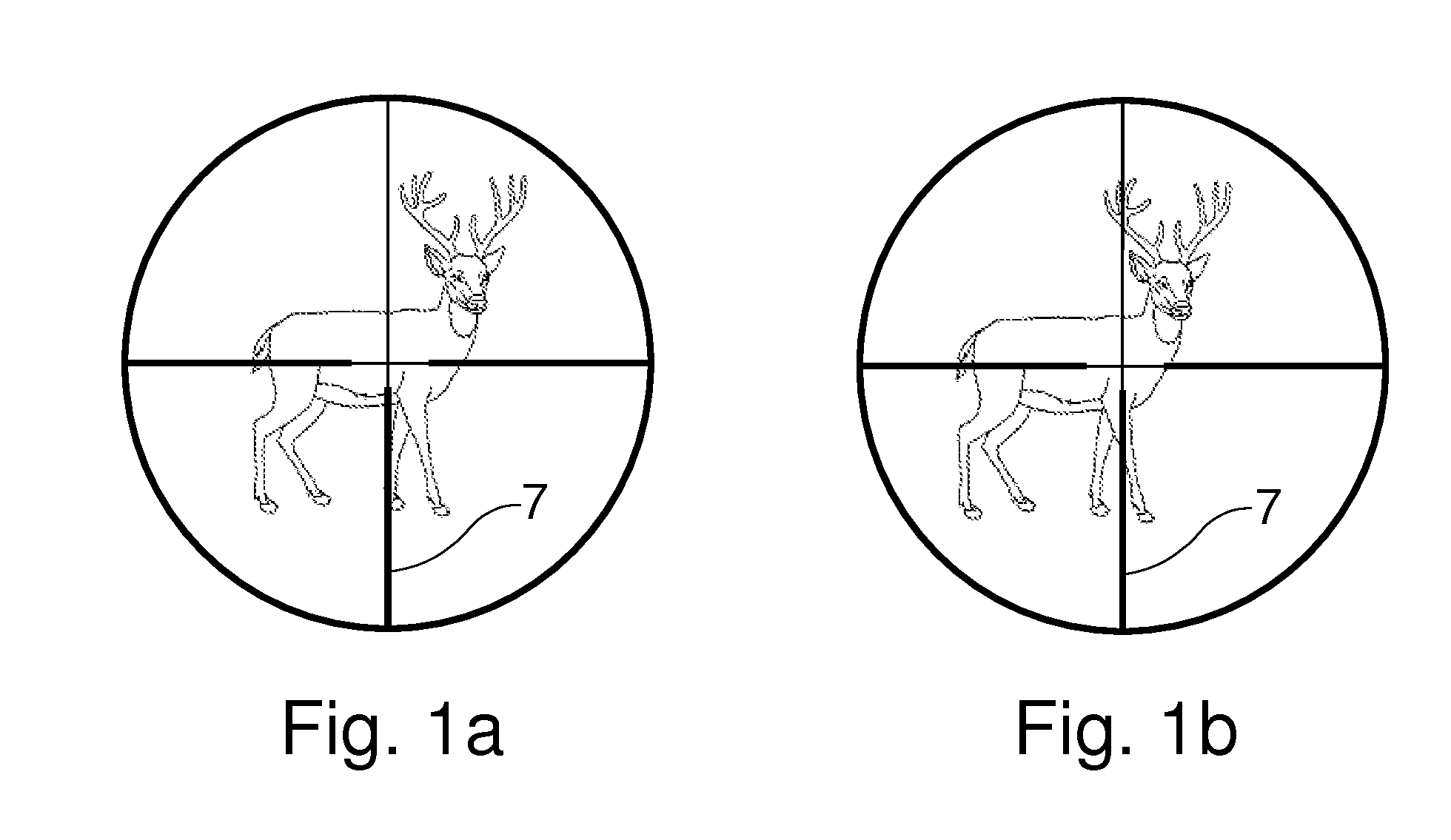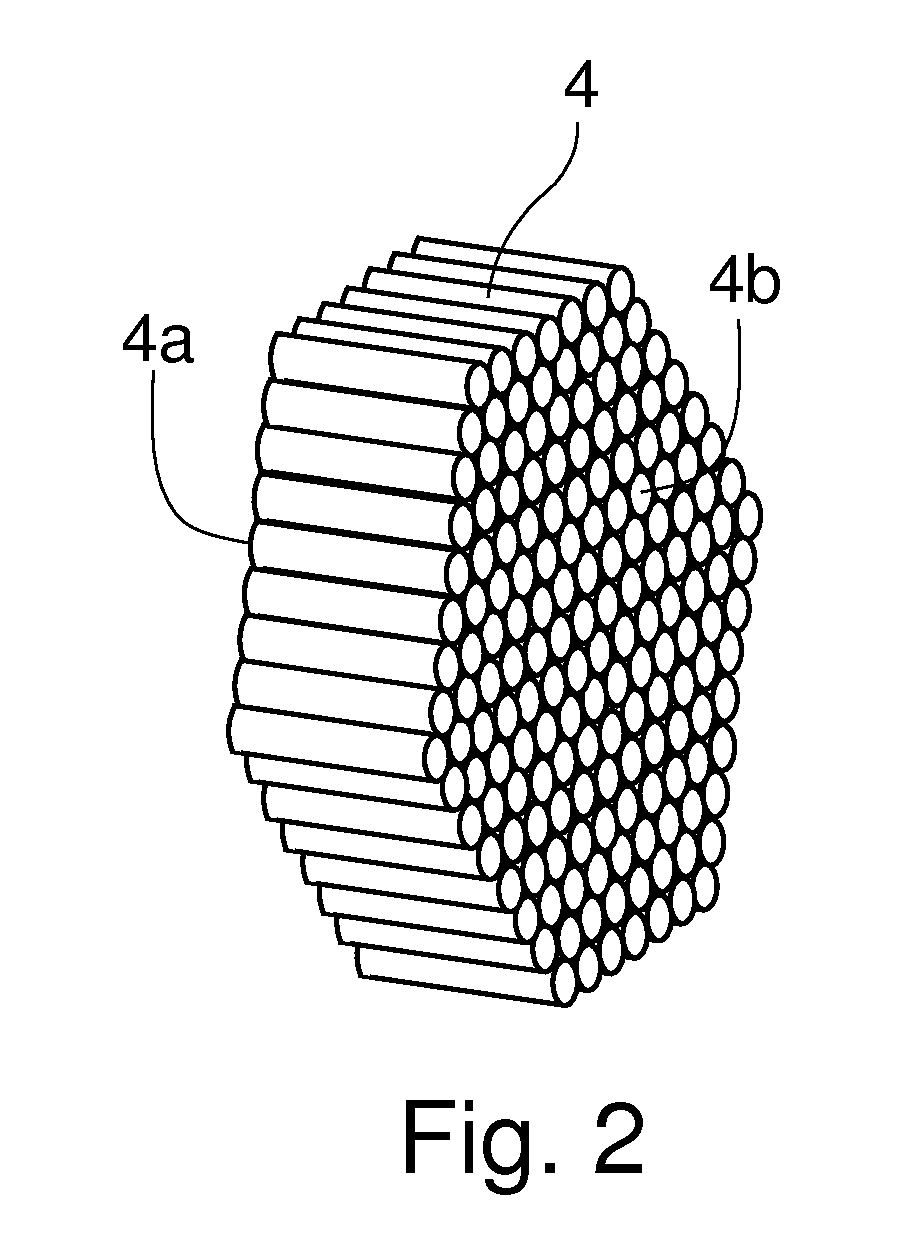Telescopic gun sight free of parallax error
a technology of parallax error and telescopic gun, applied in the field of optical sights, can solve the problems of difficult human eye, if not impossible, and do not completely eliminate the requirement, and achieve the effect of eliminating parallax error, simple and inexpensively, and easy implementation
- Summary
- Abstract
- Description
- Claims
- Application Information
AI Technical Summary
Benefits of technology
Problems solved by technology
Method used
Image
Examples
first embodiment
A. First Embodiment of the Invention
[0029]FIG. 3 shows a side schematic view of a telescopic gun sight in accordance with a first embodiment of the invention. With reference to FIG. 3, the first embodiment of the invention has an objective 1 which is an image forming device. The objective 1 has a focal plane 2 and an optical axis (not shown). The optical axis of the objective forms the optical axis of the telescopic gun sight. An image erecting means 3 is positioned on the optical axis after the objective. A fiber optic faceplate 4 is placed on the optical axis after the image erecting means 3. A reticle 7 is placed on the optical axis coplanar with the objective focal plane 2 to designate the point of aim. The entire assembly may be encased in a suitable housing. The housing is not an essential feature of the invention and is not shown.
[0030]When said telescopic gun sight is pointed at a distant target, the objective 1 forms a first image of the target at the objective focal plane ...
second embodiment
B. Second Embodiment of the Invention
[0035]FIG. 4 shows a side schematic view of a second embodiment of the invention. In this embodiment an eyepiece 6 is added to the assembly described in the first embodiment. The eyepiece 6 is positioned on the sight's optical axis, after the fiber optic faceplate 4, and at the rear end of the sight. The eyepiece 6 is positioned such that it converts the target image displayed on the emitting surface 4b of the fiber optic faceplate 4 into a virtual (and possibly magnified) image for the shooter's eye to see. The eyepiece 6 may comprise one or more lenses or lens groups. Personas skilled in the art of optical engineering are familiar with the principles of designing an eyepiece. A plurality of suitable eyepiece designs can be found in Handbook of Optical Systems, Vol. 4: Survey of Optical Instruments edited by Herbert Gross, Wiley-VCH Verlag GMBH & Co., Weinheim, Germany, 2008, ISBN 978-3-527-40380-6.
[0036]The added eyepiece 6 allows the shooter t...
third embodiment
C. Third Embodiment of the Invention
[0037]FIG. 5 shows a side schematic view of a third embodiment of the invention. This embodiment is a variation of the second embodiment wherein the fiber optic faceplate is relocated to the objective's focal plane. This can provide certain advantages in terms of the optimal design of optical elements such as objective and eyepiece lenses used in the invention.
[0038]With reference to FIG. 5, the third embodiment of the invention has an objective 1 which is an image forming device. The objective 1 has a focal plane 2 and an optical axis (not shown). The optical axis of the objective forms the optical axis of the telescopic gun sight. A fiber optic faceplate (FOFP) 4 is positioned on the optical axis after the objective such that its incident surface 4a is coplanar with the objective focal plane 2. An image erecting means 3 is positioned on the optical axis after the FOFP 4. An eyepiece 6 is positioned on the optical axis after the image erecting me...
PUM
 Login to View More
Login to View More Abstract
Description
Claims
Application Information
 Login to View More
Login to View More - R&D
- Intellectual Property
- Life Sciences
- Materials
- Tech Scout
- Unparalleled Data Quality
- Higher Quality Content
- 60% Fewer Hallucinations
Browse by: Latest US Patents, China's latest patents, Technical Efficacy Thesaurus, Application Domain, Technology Topic, Popular Technical Reports.
© 2025 PatSnap. All rights reserved.Legal|Privacy policy|Modern Slavery Act Transparency Statement|Sitemap|About US| Contact US: help@patsnap.com



